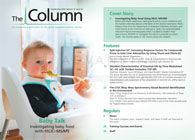Sunghwan Kim Joins Waters’s COI Programme
Waters Corporation has welcomed Dr. Sunghwan Kim of Kyungpook National University, Daegu, South Korea, into the Waters Centers of Innovation (COI) programme. Kim’s research focuses on polynuclear aromatic hydrocarbons (PAHs) in the environment, developing and applying analytical techniques to assess their impact.

Waters Corporation (Milford, Massachusetts, USA) has welcomed Dr. Sunghwan Kim of Kyungpook National University, Daegu, South Korea, into the Waters Centers of Innovation (COI) programme. Kim’s research focuses on polynuclear aromatic hydrocarbons (PAHs) in the environment, developing and applying analytical techniques to assess their impact.
PAHs are a persistent organic pollutant found in crude oil, coal, and gasoline, and are a byproduct of wood and fossil fuel combustion. Once in the environment they are difficult to remove and their longer-term environmental impact is not well understood. High profile cases such as the 2010 BP oil spill have led to increased attention on the subject, and Kim was part of the team hired to consult on the effectiveness of the clean-up and to assess the harm done to marine and plant life.
“Professor Kim is an expert in mass spectrometry and chromatographic separation. He set up one of the most advanced mass spectrometry and chromatography laboratories in Korea at Kyungpook National University,” said Professor Hong-In Lee, Dean at the College of Natural Science.
“Dr. Kim’s research is unique and contributing greatly to what we know about the effects of PAHs on our environment,” said Eric Fotheringham, Director – Waters Centers of Innovation Programme. “Dr. Kim can see the potential of new technologies and he puts them to new uses before many of his contemporaries. We couldn’t be happier to have him and KNU in our programme.”
The COI Programme hopes Kim’s inclusion will lead to the development of effective ways to clean up PAHs in oil spills and correct the long-term damage to marine and plant lives.
For more information about Kyungpook National University please visit http://en.knu.ac.kr/
For more information about Waters Corporation please visit www.waters.com - L.B.

Regulatory Deadlines and Supply Chain Challenges Take Center Stage in Nitrosamine Discussion
April 10th 2025During an LCGC International peer exchange, Aloka Srinivasan, Mayank Bhanti, and Amber Burch discussed the regulatory deadlines and supply chain challenges that come with nitrosamine analysis.











